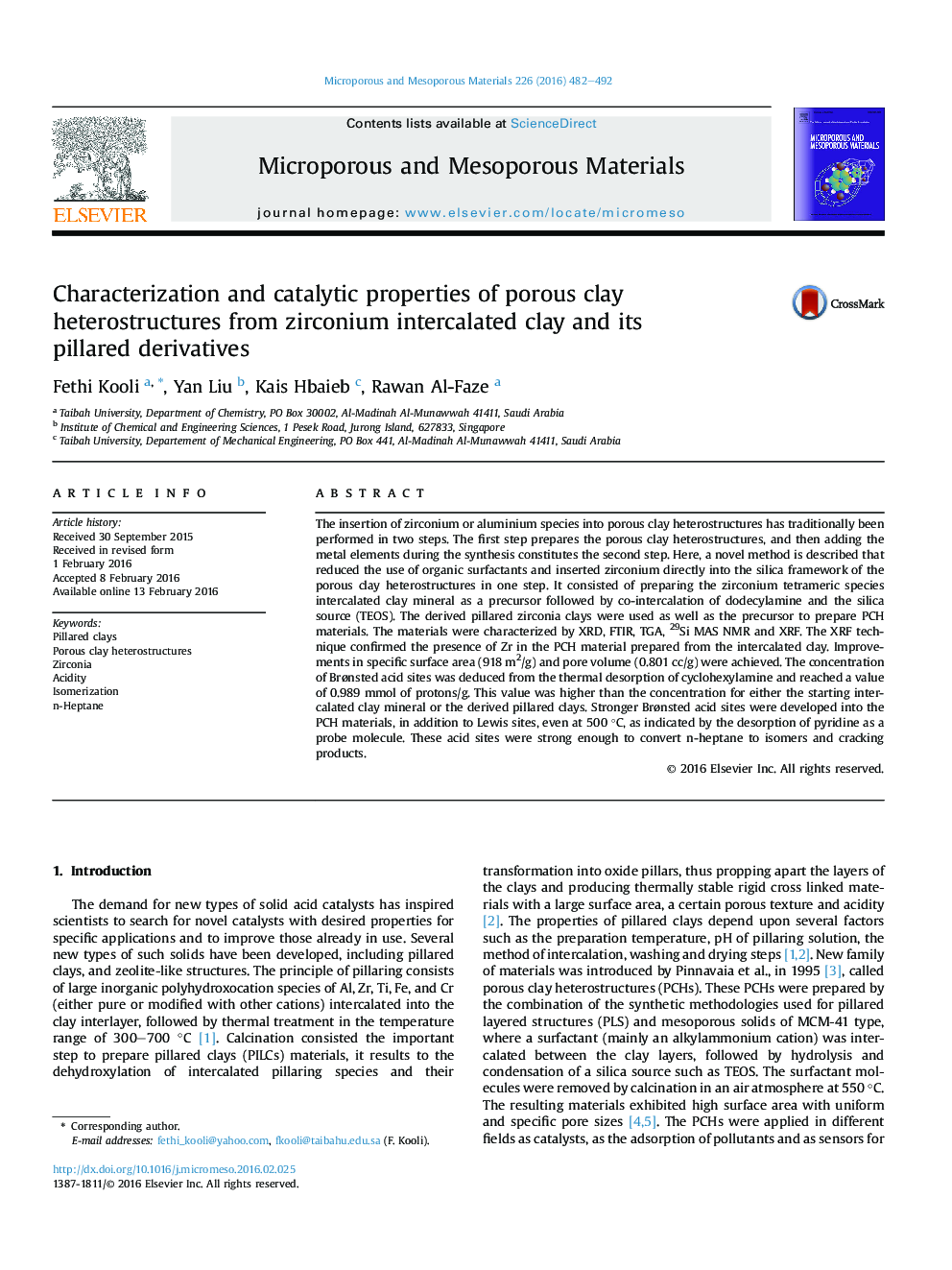| کد مقاله | کد نشریه | سال انتشار | مقاله انگلیسی | نسخه تمام متن |
|---|---|---|---|---|
| 72219 | 49013 | 2016 | 11 صفحه PDF | دانلود رایگان |
• Non conventional method was described to prepare Zr porous clay heterostructures (PCHs).
• PCH was prepared using intercalated zirconium clay after reaction with C12 amine and TEOS.
• PCHs were not obtained from zirconia pillared clays after reaction with C12 amine and TEOS.
• PCH material exhibited a surface area of 918 m2/g and acidity of 0.989 mmol of protons/g.
• Hydro-isomerization of heptane was achieved with 65% of isomers selectivity at 350 °C.
The insertion of zirconium or aluminium species into porous clay heterostructures has traditionally been performed in two steps. The first step prepares the porous clay heterostructures, and then adding the metal elements during the synthesis constitutes the second step. Here, a novel method is described that reduced the use of organic surfactants and inserted zirconium directly into the silica framework of the porous clay heterostructures in one step. It consisted of preparing the zirconium tetrameric species intercalated clay mineral as a precursor followed by co-intercalation of dodecylamine and the silica source (TEOS). The derived pillared zirconia clays were used as well as the precursor to prepare PCH materials. The materials were characterized by XRD, FTIR, TGA, 29Si MAS NMR and XRF. The XRF technique confirmed the presence of Zr in the PCH material prepared from the intercalated clay. Improvements in specific surface area (918 m2/g) and pore volume (0.801 cc/g) were achieved. The concentration of Brønsted acid sites was deduced from the thermal desorption of cyclohexylamine and reached a value of 0.989 mmol of protons/g. This value was higher than the concentration for either the starting intercalated clay mineral or the derived pillared clays. Stronger Brønsted acid sites were developed into the PCH materials, in addition to Lewis sites, even at 500 °C, as indicated by the desorption of pyridine as a probe molecule. These acid sites were strong enough to convert n-heptane to isomers and cracking products.
Figure optionsDownload as PowerPoint slide
Journal: Microporous and Mesoporous Materials - Volume 226, 15 May 2016, Pages 482–492
